Numerous mythical creatures have been created Over the course of human history. Most of them were based on misunderstandings of real animals, plants, or even other human populations. Greek Legends of satyrs and dog-faced barbarians, for example, may have been based on distorted traveler’s accounts of apes and monkeys. Is it possible, however, that some mythical creatures may actually exist more or less as they were described in legend and myth? This is the claim of the Merrylin Cryptid Museum, which contains what it claims to be the bodily remains of a variety of fantastic creatures ranging from dragons to aliens. They could be genuine, but they also resemble specimens that turned out later to be hoaxes.
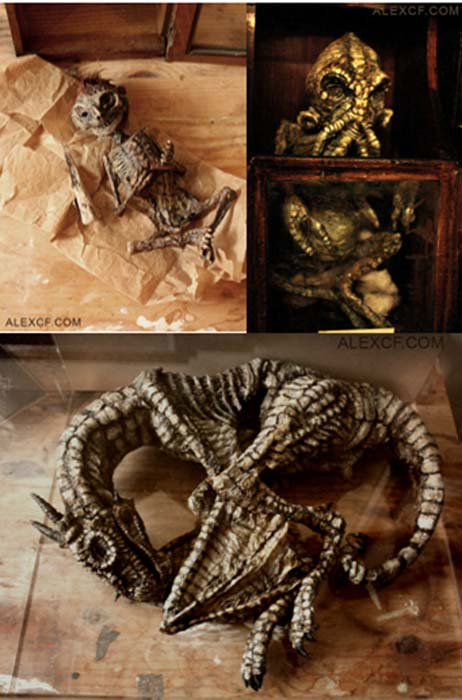
Gnome ( Alex CF 2014 ), Cthulhu ( Alex CF 2014 ),and Dragon ( Alex CF 2014 ) of the Merrylin Cryptid Museum.
Unusual Specimens Found in a Basement
The creatures in the museum were apparently found in the 1960s in the basement of a mansion owned by Thomas Theodore Merrylin, a crypto-zoologist and an eccentric archaeologist. The specimens were found enclosed in boxes and resembled the withered skeletal remains of various fantastic creatures: mermaids, faeries, gnomes, dragons, vampires, and even some extraterrestrials. In addition to skeletal remains, some of the original tissue such as fur and scales were preserved on the remains.

Image said to depict Thomas Theodore Merrylin. ( Merrilyn Cryptid Museum )
Not all the specimens are fantastic. There are a few dinosaurs, for example, and some specimens which could just be unusual animals. On the other hand, items like regalia related to Cthulhu and the remains of an ancient pharaoh are less likely to be genuine, since they imply much more improbable things than just the existence of mythical creatures .
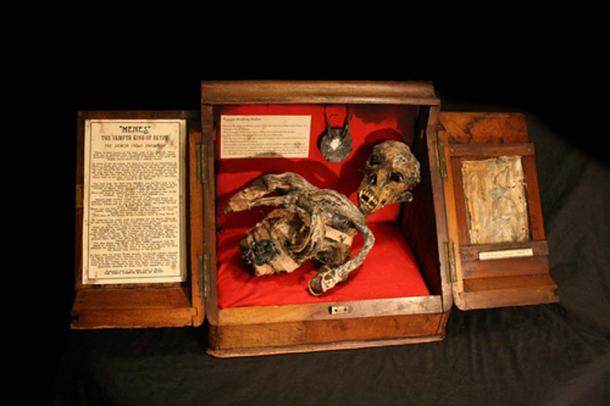
““Menes” the Vampyr King of Egypt – The Demon Child Pharaoh” of the museum. ( Alex CF 2014 )
Fake Mermaid Tales
Just because the remains of creatures like werewolves have been found doesn’t mean that we can conclude that they exist. There was at least one case where the body of a fantastic creature was found but later turned out to be fake and was created through sewing together corpses of different animals. This example would be the Fiji Mermaid.
The Fiji Mermaid gained a surge of fame when, in the year 1842 in New York City, it was presented by a man claiming to be an English naturalist by the name of Dr. J. Griffin of the “British Lyceum of Natural History.” The tale he told was that he found the mermaid off the coast of the Fiji Islands in the south Pacific. Dr. Griffin was approached by a man named P.T. Barnum. According to the story, P.T. Barnum tried to pressure Dr. Griffin into putting the mermaid on display at his museum by publicizing the existence of the mermaid by giving woodcuts of mermaids to the press and claiming that they were depictions of the mermaids found by Dr. Griffin.
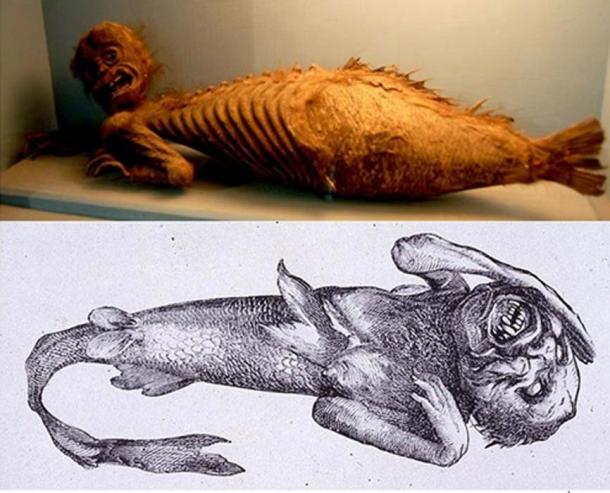
[Top] Fiji Mermaid, in the Folklore section at the Haus der Natur (House of Nature), a natural history collection in Salzburg, Austria. ( CC BY-NC-SA 2.0 ) [Bottom] P.T. Barnums Feejee mermaid ( Public Domain )
After the creature was displayed, it was quickly revealed to be a hoax. It turned out that P.T. Barnum and Dr. Griffin were working together all along to pull off the deception. Dr. Griffin was not even a real naturalist but a conman named Levi Lyman. The Fiji Mermaid was in fact not a mermaid but a creature created by sewing the tail of a fish to the torso of a monkey. This particular act of sewing the tales of fish to the upper bodies of primates was an artform in Japan and the East Indies used to create half-monkey, half-fish figurines for religious purposes. The Fiji Mermaid was probably one of these.
The Fiji Mermaid was most likely made around 1810 by a Japanese fisherman and sold to a British sea captain named Samuel Barret Eades in 1822 by Dutch merchants who had been to the East Indies or Japan. Eades attempted to make a profit from presenting it as a genuine mermaid. But his effort to gain a fortune through this turned out to be unsuccessful. After his death, it was passed to his son who sold it to a showman named Moses Kimball. P.T. Barnum in fact leased the Fiji Mermaid from Moses Kimball to present it as an actual creature discovered by Dr. Griffin.
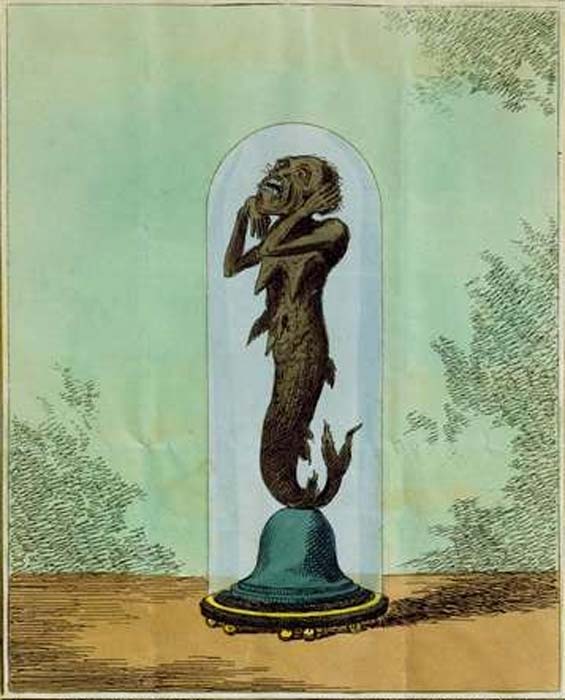
A depiction of what would later come to be known as the Fiji mermaid, commissioned by Captain Samuel Barrett Eades. ( Public Domain )
Making Mythical Creatures Look Real?
A more recent version of this kind of hoax was done with photography, when during a photoshop contest, human skeletons were superimposed onto paleontological excavation sites involving the excavation of mammoth bones to make it appear as if they were unearthing the bones of giant humans. This was of course done with photography, not sewing together animal corpses, but it shows how easy it is to make a mythical creature look real in the modern world.
Could the specimens at the Merrylin Cryptid Museum be genuine? There are too many to dismiss them all, but there are some issues to consider. The astronomer Carl Sagan once said that extraordinary claims require extraordinary evidence. The reality of the Ctulhu regalia found at the museum, for example, would imply that H.P. Lovecraft’s fiction was really history disguised as fiction, something he never claimed and something that is not supported by any other evidence.
Some of the creatures also do not follow known biological and physical laws. If these creatures turned out to be real, we would not just have to revise our views of what is mythical, but also our understanding of biology and natural history. This would certainly be the case if the dinosaur specimens were genuine.
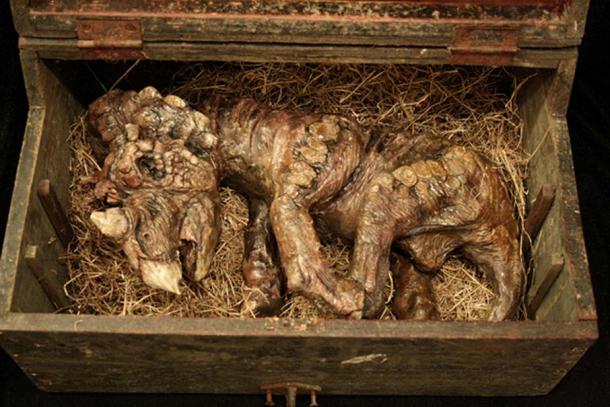
Ceratopsid Dinosaur of the Merrylin Cryptid Museum. (Alex CF 2014 )
Another example of this would be one specimen of a lycanthrope, which supposedly represents the remains of a human in the process of transforming into a lycanthrope. The problem with this being real is that the process described would likely kill anyone who went through it, making it improbable that this is a genuine lycanthrope.
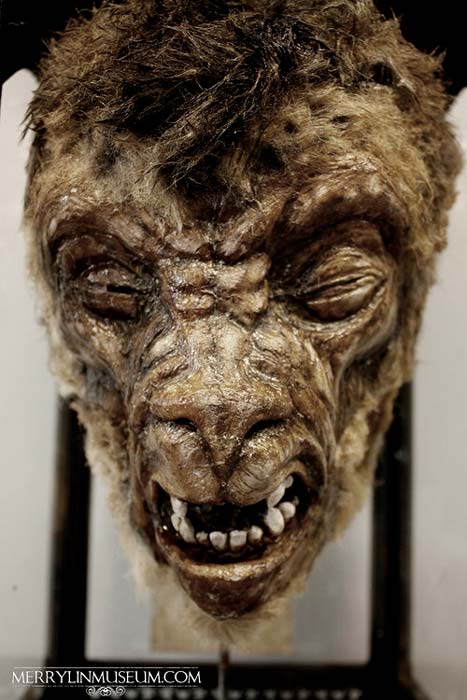
Lycanthrope specimen at the Merrylin Cryptid Museum. ( Alex CF 2016 )
For the moment, we cannot come to conclusions since none of these specimens have been examined by teams of experts. Until then all we can do is guess. From the available data though, the proponents of the reality of these extraordinary creatures will require some extraordinary evidence.